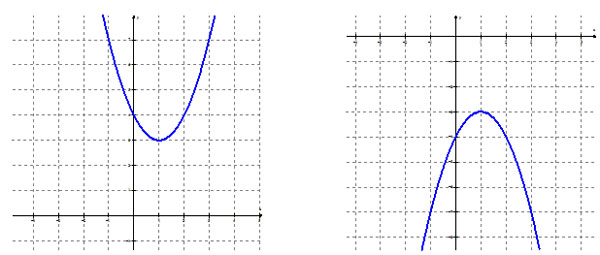
In this lesson, you will learn how to find solutions to quadratic equations that have no real solutions, and, therefore, have complex solutions.
You know that the solutions to an equation are found on the graph by identifying the x-intercepts. However, what happens when the graph of an equation doesn't cross the x-axis, and thus has no x-intercepts? This indicates the quadratic equation has no Interactive popup. Assistance may be required. and, therefore, has Interactive popup. Assistance may be required. .


Notice that neither of the graphs below has x-intercepts.

To make it possible to find and write solutions to equations such as these, a number system that includes both real and imaginary numbers was devised. Numbers in this set are called complex numbers. Complex numbers consist of all sums a + bi where a and b are real numbers and iis imaginary, thus producing the sum or difference of a real number and an Interactive popup. Assistance may be required. .
Examples of complex numbers:
5, same as 5 + 0i
3i, same as 0 + 3i
5 + √-9 = 5 + 0i
4 + √-28 = 4 + 2i√7
i is the imaginary part of the number. bi produces multiples of i.